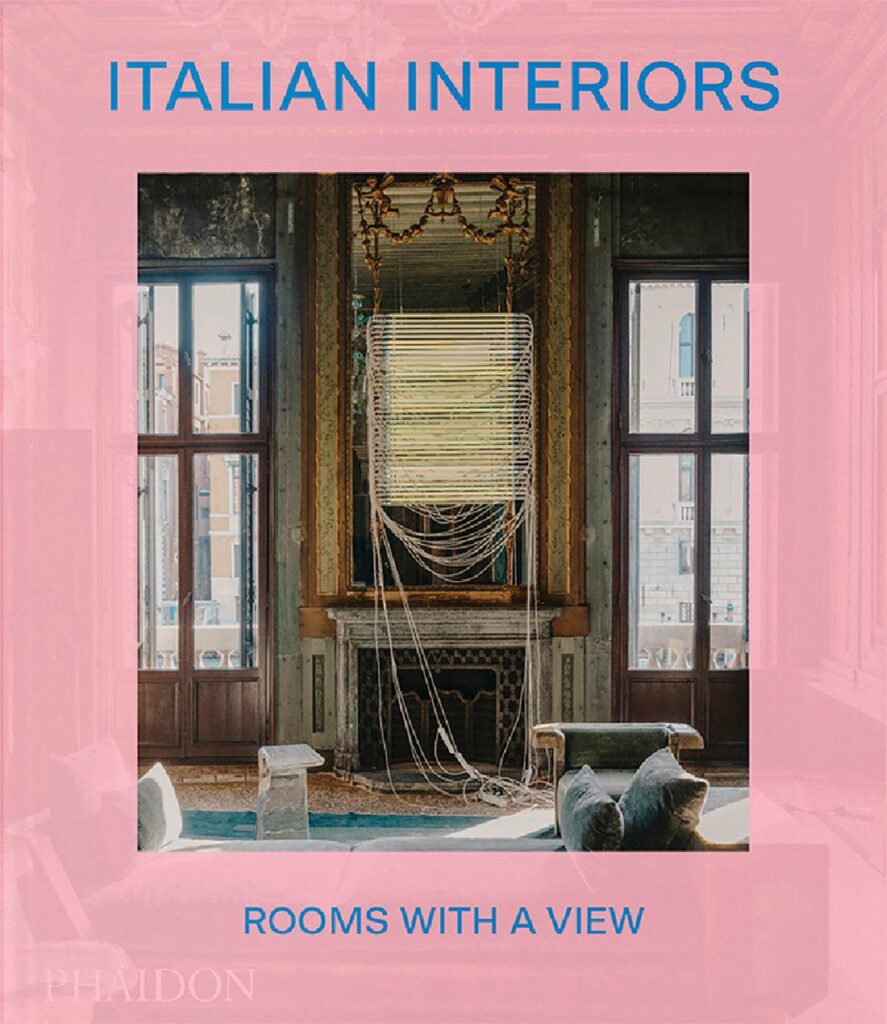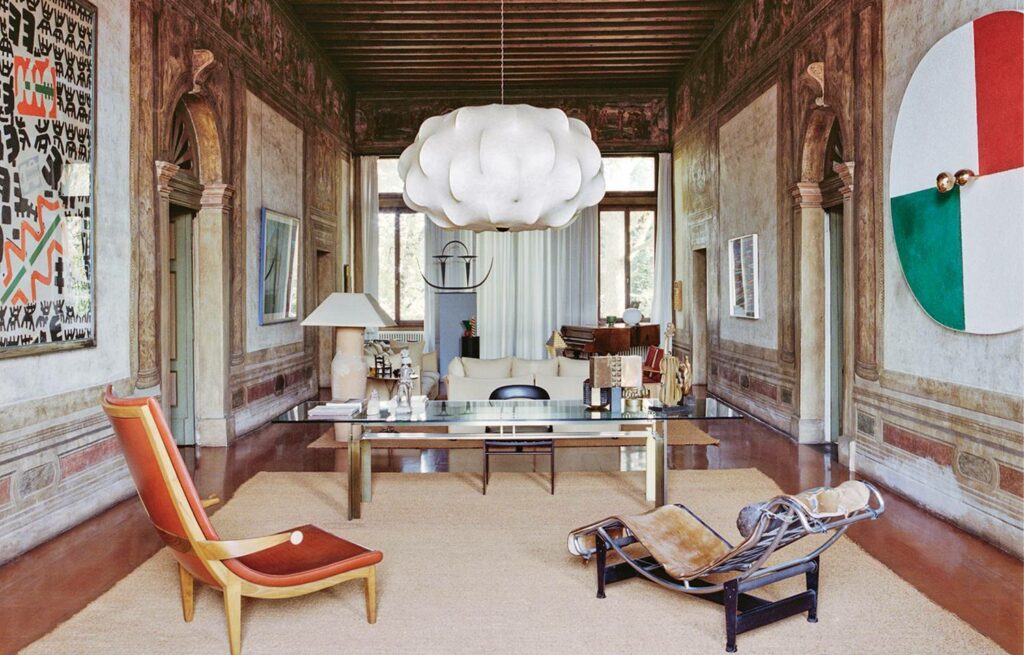In his influential 1928 essay, Gio Ponti argued that the ideal Italian home should be more than just a defense against the elements or potential threats. But, it should hold the identity of the residence. It should extend beyond basic functionality, as a house is not merely a shelter but “a repository for life: a place where objects bring joy and comfort.” The homes featured in this new collection from Phaidon exemplify this idea, showcasing examples that serve as a canvas for expressing the unique identities of their residents.
Rooms with a Statement
The collection features 50 architectural projects presented in a unique table of contents. Instead of titling or crediting the creators, the author describes each entry. Rather than following a chronological order, Laura May Todd has thematically grouped the chapters to highlight different styles and eras.
Among the modern designs showcased is Mirta Ottaviani’s holiday home in Puglia. This design combines limewashed white with vibrant accents and spacious outdoor areas. This volume also embraces traditional design elements. For instance, a Tuscan residence with walls reflects an earthy vibe. The wall of this residence is made from cocciopesto—a type of concrete that dates back to ancient Rome.
Casa di Fantasia, designed by Gio Ponti in 1953 for an art-loving couple, exemplifies his bold style. Nicolas Moussallem and David Raffoul recently updated the space, preserving its dreamlike quality. Their attention to detail captures the joyful spirit that Ponti envisioned for an ideal Italian home.
Identity of a House and its Significance
Every interior architect and designer must consider the identity of a home before working on a project. Each house presents a rich tapestry woven from cultural, historical, and personal narratives. A house is not merely a physical structure. It serves as a vessel for the culture and traditions inherent to its region. Design elements, material selection, and spatial organization reflect the practices, mandates, and conditions shaping how people live in areas rich in natural resources. For instance, incorporating locally sourced timber or stone enhances a home’s aesthetic value and emphasizes the community’s connection to its environment. The layout may feature aspects that mirror societal values, such as open communal spaces encouraging family interaction or more private areas providing seclusion.
A home’s historical context is vital to its identity. It may reflect architectural styles that have evolved over generations. It showcases craftsmanship that narrates a story encompassing its inhabitants and the influences shaping their lives. This intricate relationship between history, culture, and personal significance. In this way, a home accurately represents its identity and its residents. Thus, houses are not merely physical structures but profound markers of time. They tell stories about the past. Every residence serves as a narrative fabric that records important historical eras. It showcases diverse influences, from architectural styles to environmental obstacles. It showcases their preferences, values, and individuality, serving as a canvas for personal expression.
Each house, whether decorated with contemporary designs or vintage artifacts, tells the unique story of its residents, making it a vital part of their identity and life journey. A house’s identity is closely connected to its surroundings in terms of materials and design. Traditional homes often use locally sourced materials and adapt their architectural styles to suit the climate, reflecting the area’s cultural heritage while inspiring modern sustainable living practices. This relationship highlights the ecological wisdom inherent in traditional designs, reminding us of the importance of achieving harmony between construction and the environment.
Moreover, the identity of a house creates a strong sense of belonging for those who live within its walls. This emotional connection is often deepened by personal items collected over the years. Treasured heirlooms, family photographs, and cherished pieces of furniture add warmth and familiarity to the space. These elements transform a physical structure into a comforting sanctuary filled with memories, providing shelter and a sense of home.
In addition, homes play a crucial role in shaping the character and dynamics of neighborhoods and cities. By preserving the unique identity of individual houses, communities can resist the uniformity that often characterizes urban environments. This preservation promotes diversity, ensuring neighborhoods maintain their vibrancy and cultural richness.
Dwellings with a distinct and recognizable identity—such as historically significant properties, unique architectural designs, or culturally meaningful homes—often command more excellent aesthetic and monetary value. They attract admiration from both locals and visitors alike. Also, they can potentially evolve into cultural icons within their communities. By acknowledging and safeguarding the identities and uniqueness of these homes, we pay homage to their importance. And. mark them as carriers of history, artistry, and personal significance. This awareness ultimately enhances our lives and the wellness of society. It reminds us of the rich narratives that dwell within the walls of our homes.
Final word
The ideal Italian dwelling, described by Gio Ponti, emphasizes that a home should be more than functional; it should encapsulate life and culture. The essence of a house should reflect cultural, historical, and personal narratives using local materials and values. Emotional connections to personal belongings foster a sense of belonging and preserve identities within neighborhoods and cities, enhancing cultural diversity and promoting sustainable practices.



